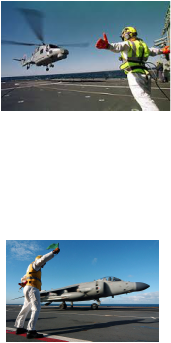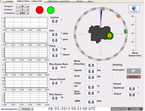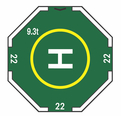|
According to the Reuters news agency, the helicopter was en route to the Chevron-operated Tombua-Landana platform, offshore Cabinda, Angola, when it crashed.
The California-based oil company told Reuters that five passengers and a pilot were in the helicopter. Search and rescue operation is underway for the two people missing. Angola’s Angonoticias reports that all the six people have died; two expatriates and four Angolans. The website also says the helicopter went down in bad weather In a statement sent to Offshore Energy Today, a Chevron spokesperson said: “A helicopter operated by Heli-Malongo departed the Malongo Terminal, in Cabinda province, Monday, September 26, 2016, at 15:23 and was en-route to the Tombua-Landana offshore facilities. The helicopter did not reach its intended destination. It was carrying five passengers and one pilot. One of the passengers is a CABGOC employee; four of the passengers are contractors providing services to CABGOC. Search and rescue operations have been mobilized; currently, there are 19 marine vessels and three helicopters involved in the efforts. The search and rescue team has located the remains of four personnel. Extensive search and rescue activities continue for those who remain missing.” The Tombua-Landana field started oil production in September 2009. The field is located in Block 14, 50 miles (80 kilometers) offshore Angola.
0 Comments
The shortlisted nominees for the 2016 Air Ambulance Awards of Excellence have been announced today. The winners will be revealed at the awards ceremony to be held on 14 November at the Millennium Gloucester Hotel in Kensington, London.
The independent judging panel met and considered all entries made across the ten categories. After lengthy deliberation and discussion, the panel was pleased to shortlist the following: Outstanding Young Person Award:
Charity Staff Member of the Year:
Air Ambulance Paramedic of the Year:
Air Ambulance Doctor of the Year:
Air Ambulance Pilot of the Year:
Air Ambulance Campaign of the Year:
Charity Volunteer of the Year:
Special Incident Award:
Lifetime Achievement Award:
Innovation of the Year:
 "So Green Deck Operations, odd name for an aviation support company", many people have posed the question to me, whilst on assignment, I thought it only right to explain the reasoning behind the name and why not do it via my new blog! First reason: Most people who know me, will also know that I come from a military background, 30 years serving in the Royal Navy (Fleet Air Arm). When operating helicopters from a ship there may be times when ship's command may wish to dispense with the requirement to fit aircraft lashings (tie downs) in order to reduce time on deck. When command want to dispense with lashings a “Green Deck Ops” contract is invoked. This contract is between the officer of the watch and the section controlling the flying operations which would be the Flight Deck Officer (my old job in the RN). Second reason: Again from maritime military aviation, when we operated helicopters from our decks we relied on voice comms and light signals to control the various stages of aircraft operations. So a red light meant....no flying, amber deck....cleared to engage rotors and of course Green Deck....the deck is ready in all respects to launch / recover the aircraft. The green light was the signal also to remove tie downs and chocks also. The separation of light signals between helicopters and jets was flashing for helicopters and steady for jets. On Aircraft Carriers the Flight Deck Officer used a Green Flag to launch the jets....again my old job...awesome.  Third reason: Offshore on most vessels, rigs and installation which operate helicopters there is a system which is used to analyse helideck motion during aircraft landing and take off to improve safety. The Helideck Monitoring System (HMS) will monitor helideck vertical velocity, attitude, wind speed, direction, temperature and bars pressure. It has some very complex algorithms, however for people like me it is genius as if the deck is out of limits to operate helicopters a red light will show, telling the HLO / Radio Op / Bridge that the they have a Red Deck and of course if everything is within limits the team will get a Green Deck (green light).  And the final reason...bear with me: CAP 437 Chapter 4 (Visual Aids) Section 2 Para 2.1 (Helideck Landing Markings) - "The colour of the helideck should be dark green" So there you have it, Green Deck Operations, which represents my career both in the military and the natural transition to civilian maritime aviation.
|
|
||||||